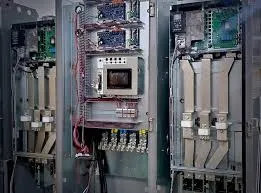The Importance of Fire Resistant Strips in Modern Construction
In today's world, safety is paramount, especially when it comes to fire prevention in buildings. One of the critical components that often goes unnoticed is the fire resistant strip. These strips play a vital role in enhancing the fire safety of structures, helping to contain fires and slow their spread, thus providing crucial time for occupants to evacuate and for firefighters to respond. In this article, we will explore the significance, applications, and types of fire resistant strips, as well as their compliance with safety regulations.
What are Fire Resistant Strips?
Fire resistant strips are specialized materials installed in doors, windows, walls, and other openings to mitigate the passage of smoke and flames. Made from various non-combustible materials, these strips are designed to resist heat and hinder the transfer of flames from one area to another. They are commonly used in combination with fire doors, maintaining the integrity of fire-rated assemblies that are essential for effective fire protection.
Function and Applications
The primary function of a fire resistant strip is to seal gaps and openings that could act as pathways for heat and smoke. In residential and commercial buildings, fire resistant strips are essential around door frames, window frames, and service penetrations. In the event of a fire, these strips expand when exposed to heat, filling the gaps and creating a barrier that obstructs fire and smoke movement. Thus, they help compartmentalize a building, limiting fire spread and allowing for safe evacuation routes.
Furthermore, fire resistant strips contribute to overall building compliance with fire codes and regulations. Many jurisdictions enforce strict building codes that require the installation of fire-resistant materials in specific areas. By utilizing these strips, building owners can meet regulatory standards while enhancing the safety features of their properties.
Types of Fire Resistant Strips
Fire resistant strips come in various types and materials, each designed for specific applications
. Here are some common typesfire resistant strip

1. Intumescent Strips These strips expand when exposed to heat, typically designed for use in fire doors and frames. Intumescent material, which can be composed of graphite or other heat-reactive substances, forms a char that seals gaps during a fire.
2. Smoke Seals These seals are often combined with fire resistant strips and are effective in preventing smoke from traveling through gaps. Smoke seals do not necessarily need high-temperature resistance but are crucial in limiting smoke damage.
3. Acoustic Fire Strips These multifunctional strips provide both fire resistance and sound insulation, making them suitable for use in areas where noise reduction is also a priority.
4. Self-Adhesive Strips For ease of installation, self-adhesive fire resistant strips are available. These strips are ideal for retrofitting existing doors and windows with minimal hassle.
Compliance and Standards
Fire safety standards vary by country and region. In the United States, the National Fire Protection Association (NFPA) and the Underwriters Laboratories (UL) set rigorous standards for fire-resistant materials, including strips. These regulations define the necessary performance specifications, including time ratings (e.g., 20-minute, 60-minute) that indicate how long a fire resistant strip can withstand fire exposure.
Compliance not only ensures the safety of the building occupants but also safeguards property and can lower insurance premiums. Builders and architects should consult local codes and industry standards when selecting and installing fire resistant strips.
Conclusion
In conclusion, fire resistant strips are a crucial yet often overlooked element of fire safety in buildings. Their ability to contain smoke and flames contributes significantly to the safety and security of occupants during a fire emergency. As buildings continue to rise in complexity and density, the importance of effective fire protection measures cannot be overstated. By incorporating high-quality fire resistant strips, property owners can enhance their safety features, comply with regulations, and ultimately save lives. Investing in fire protection is not just about adhering to laws; it is about ensuring the safety and wellbeing of all who enter a building. As such, understanding and utilizing fire resistant strips is an investment in a safer future.
-
XIANGFAN Rubber Tape-Ultimate Solutions for All Your Insulation NeedsNewsJun.24,2025
-
XIANGFAN Rubber Tape-Protection for Industrial and Residential ApplicationsNewsJun.24,2025
-
XIANGFAN Rubber Tape: Superior Safety and Sealing for Demanding EnvironmentsNewsJun.24,2025
-
XIANGFAN Rubber Tape: Reliable Solutions for Every Electrical ChallengeNewsJun.24,2025
-
XIANGFAN Electrical & Industrial Tape: Powering Reliability Across IndustriesNewsJun.24,2025
-
XIANGFAN Electrical & Industrial Tape: Excellence in Every ApplicationNewsJun.24,2025
